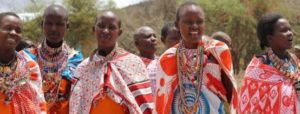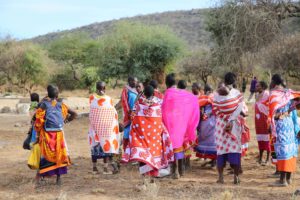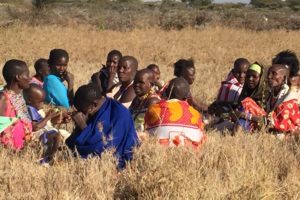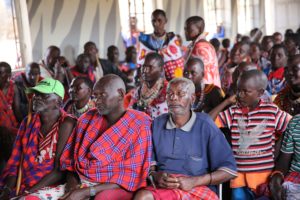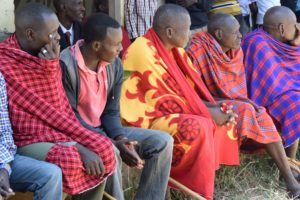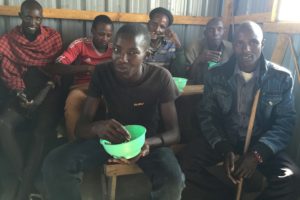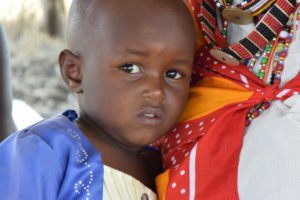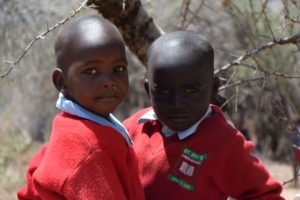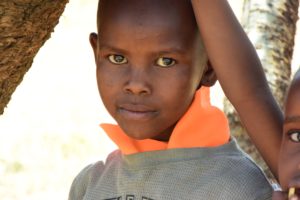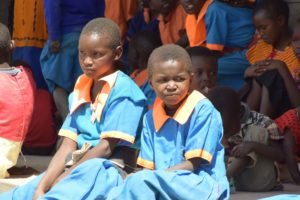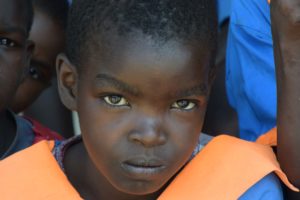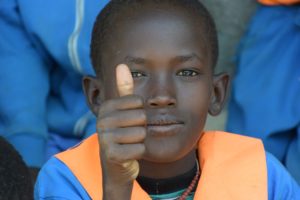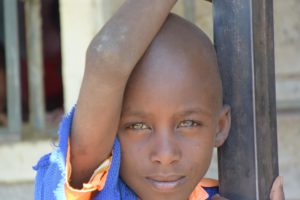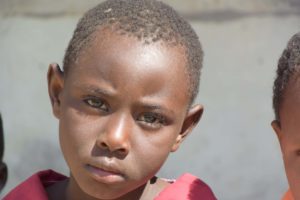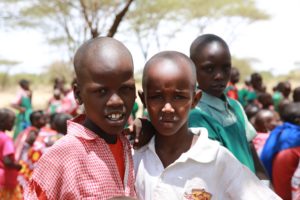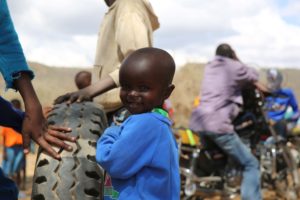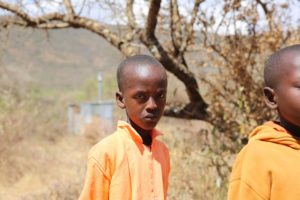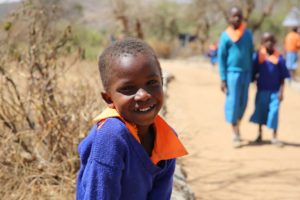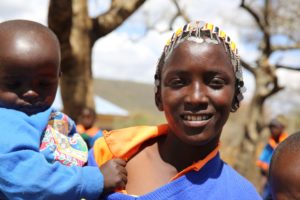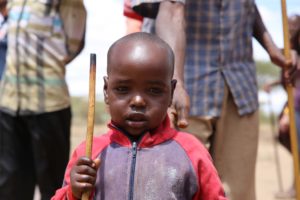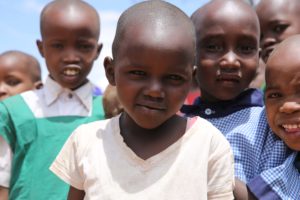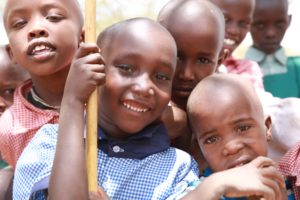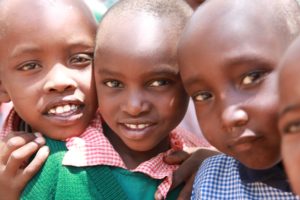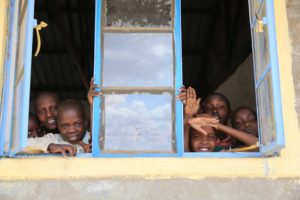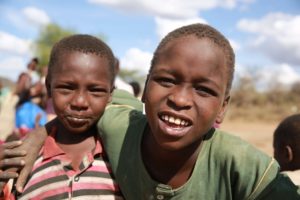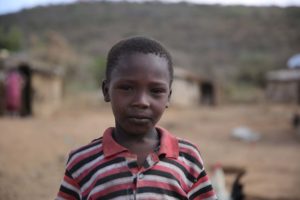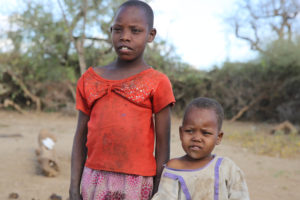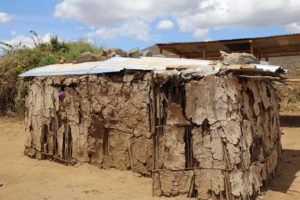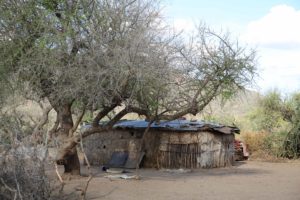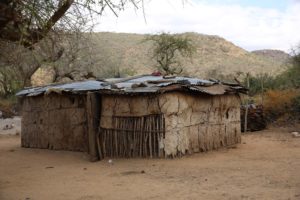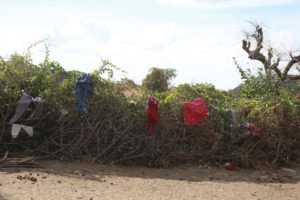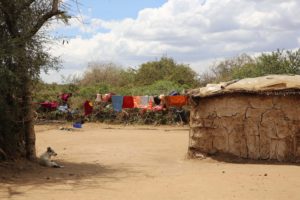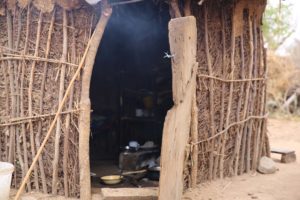Origin and history
The Maasai are most likely the best- known populations in east Africa and are also known as Masai, Maasai or Masai. The name means people who speak the Maa language. Traditionally they were nomadic pastoralists and arrived via the South Sudan and Egypt in today’s Kenya and Tanzania in approximately the year 1550. They then introduced their knowledge about agriculture and cattle breeding in their new surroundings.
During the following 200 years, they widened the borders of their territory and turned it into the most important regional powers of the Great Rift Valley. The Maasai warriors were feared by travelling Arabs, mountainous populations, missionaries and European salesmen, who avoided them so as not to have to pay road duties in the form of merchandises.
The decay of the Maasai population began in the mid-19th century when there were more and more conflicts within the Maasai resulting in the killing of whole clans. This period was also marked by epidemics, droughts and the rinderpest, which, according to an estimate by a German lieutenant, reduced the cattle population by 90 percent and killed 50 percent of the wild animals.
Starting with a 1904 treaty, and followed by another in 1911, Maasai lands in Kenya were reduced by 60 percent when the British evicted the inhabitants to make room for settler ranches. The Maasai were subsequently confined to present-day Kajiado and Narok districts. In Tanzania, the Maasai were displaced from the fertile lands between Mount Meru and Mount Kilimanjaro, and most of the fertile highlands near Ngorongoro in the 1940s.
The Maasai have been discriminated against for decades without being able to fight against it. There were even times when Maasai were not allowed to use public transport when wearing their shuka (colourful piece of cloth).
The numbers concerning the Maasai population found on the Internet vary between 850,000 and 1.5 m.
Social organization
The central unit of Maasai society is the age-set. The younger members of the population take care of the livestock. Elder men are responsible for preserving the Maasai traditions and culture and for taking political decisions. Senior elders have a lot of influence and their advice is highly valued.
The population is split into 5 age groups, which have to assume specific tasks: Young boys are sent out with the calves and lambs as soon as they can walk. Junior and senior warriors have to protect the community. The warriors spend most of their time now walkingin throughout Maasai lands, beyond the confines of their sectional boundaries. They are also much more involved in cattle trading than they used to be, developing and improving basic stock through trading and bartering rather than stealing as in the past.
Senior warriors are allowed to marry and to settle down. Moreover, they are responsible for the defense of the community. Junior and senior elders form the Council of elders and they settle disputes and discuss administration issues.
The Maasai are a patriarchal society and the lives of women differs greatly from those of men. After their marriage, they are responsible for building the Bomas and raising the children. Girls are prepared at an early age for their lives as wives. Young women undergo excision («female circumcision», «female genital mutilation», «emorata») as part of an elaborate rite of passage ritual that initiates young Maasai girls into adulthood and then into early arranged marriages. FGM is now forbidden by Kenyan law. The massive intervention by the Kenyan government, which sent representatives into the territories to check on the acceptance and execution of the no FGM law, together with drastic fines and massive lobbying against FGM by international NGOs (e.g. Masai Mama Africa Center), have resulted in a sharp drop of excision in young girls and above all provoked a change of thought about this delicate topic within the population.
Still, it is the Maasai women who bear the major burden of the work. They are responsible for building the huts (bomas) from branches, mud/adobe and cow dung, for fetching water from wells kilometers away and for collecting firewood. Moreover, they produce jewelry from glass beads and sell it at the market. The work life of women is definitely more strenous than that of the men’s. Whereas 60- to 80- years- old men retire as «elders», women of the same age have to continue their work.
According to our traditional philosophy, the land is not owned by an individual. It belongs to the dead, the ones alive and those who have not yet been born.
Massai Joseph Ole Simel
Life
The centre of the Maasai life was and is their livestock as it provides them with everything they need. Their traditional settlement is called Engang and consists of 10 to 20 small huts (bomas). They are built from mud and cow dung. Small animals also sleep inside the bomas and there is a small fire constantly burning that serves for cooking, fending off mosquitoes during the day and keeping warm during the night. A small hole in the sleeping area provides daylight inside the hut. Usually, there are no chairs, tables or wall decorations and people sleep on cowhides.
Villages are enclosed in a circular fence (an engang) built by the men, usually of thorned acacia, a native tree. At night, all cows, goats and sheep are placed in an enclosure in the centre, safe from wild animals.
- Masai-closet
- Fireplace in a boma
- Hood
Traditionally, the Maasai diet consisted of raw meat, raw milk and raw blood from cattle. The raw blood is obtained by nicking the jugular vein. Today, the stable diet of the Maasai consists of cow’s milk and maize-meal. The former is largely drunk fresh or in sweet tea and the latter is used to make a liquid or solid porridge known as Ugali. Cattle is slaughtered only for ritual purposes and bad times.
Language
The Maasai speak the Maa language, a member of the Nilo-Saharan family that is related to Dinka and Nuer. The Maa language has about 700 different terms for cattle. They are also educated in the offical languages of Kenya and Tanzania, Swahili and English.
Some examples of the Maa language
| Greeting | Sopa, and the reply is Epa |
| Welcome | Karibu |
| Thank you | Ashe |
| Thank you very much | Ashe Olein |
| What is your name? | Eikijaa Enkarna? |
| My name is… | Kaaji nanu… |
| Good bye | Sere |
| Yes | E ee |
| No | A – A |

